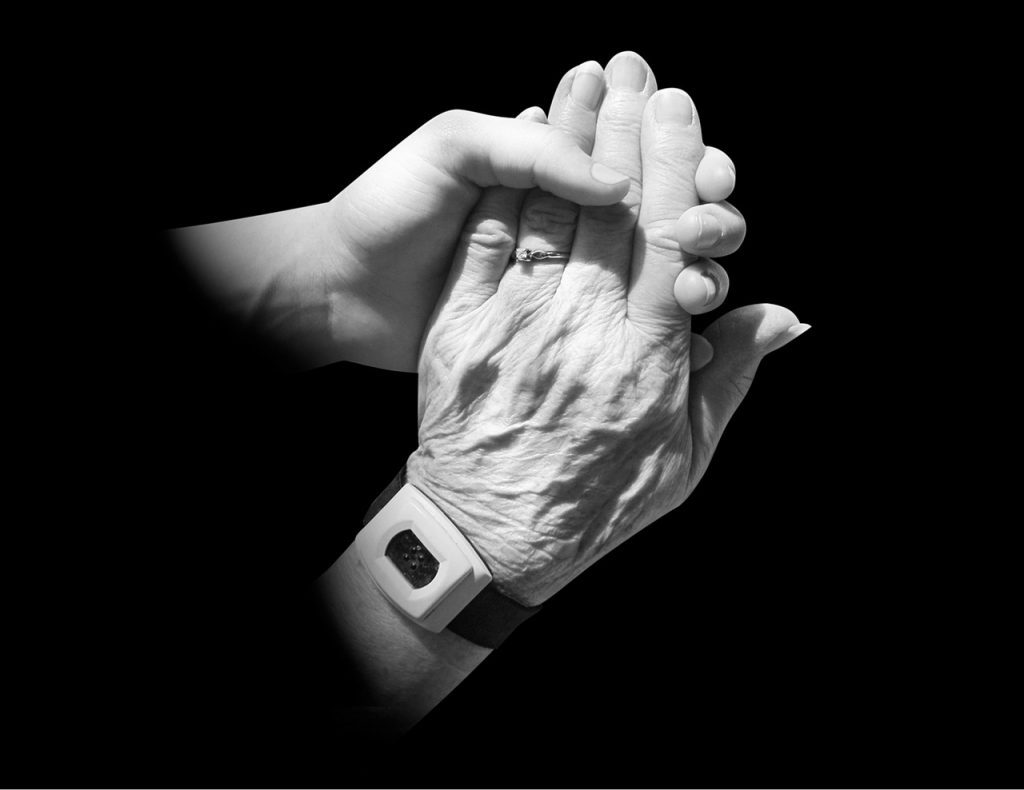Personal emergency response systems, otherwise known as life alert or medical alert systems, have been a staple of senior safety since the 1970’s when first introduced by Philips Lifeline. For decades, the underlying technology remained the same, and it’s still being used today. However, within the last 5 years, there’s been a dramatic increase in the evolution of medical alert systems, as well as a series of competing technologies that may prove just as useful, if not more so, in many situations.
A traditional medical alert system works as follows, when you experience a fall or medical emergency, you press a button worn around your wrist or neck, which then signals a base station to call a monitoring station through a landline. The agent in the monitoring station then talks to you through the base station, having a range of several hundred feet.
Most recently, top rated medical alert systems have evolved to be able to be used in and outside the home through mobile technology. The mobile pendent includes a 2 way voice communicator that automatically calls the monitoring center when pressed, and includes a GPS locator so emergency personnel or family members can find the wearer within feet of their location.
The other major innovation within the medical alert space has been the introduction of fall detection technologies. The original technology required the user to press the their help button in the event they required assistance. However, if they fell and lost consciousness, or were otherwise unable to press their help button due to injury or confusion, the monitoring center would not be alerted. This changed with the introduction of fall detection technology, which promised to alert the monitoring center of a fall, even if the user him or herself could not press the help button.
However, we are now seeing alternative technologies, that may provide similar safety for seniors in certain situations. That said, we have yet to find any one device that can provide all of the protection offered by a medical alert system. Here are some of the alternatives:
Cell Phones
With more seniors adopting cell phones, why not just call 911 from your cell phone in the event of an emergency? Cell phones can provide coverage both in and outside the home and can be carried by the user on their person. Moreover, some phones have been configured to make it easy to call for emergency services with a 911 button on their home screen, or a button on their home screen that calls an emergency response center. However, the challenge with cell phones are two fold. First, they aren’t carried by individuals at all times, especially indoors. Second, in a moment of distress, it may be difficult for someone who just experienced a fall to call 911, especially if their glasses have been removed or knocked off during their fall, or they’re experiencing cognitive difficulties.
Digital Voice Assistants
Digital voice assistants, such as Google Home, Amazon’s Alex and Apple’s Siri, can also serve to replace some of the functionality of a medical alert system. In the event of a fall, an individual can ask their digital voice assistant to call 911 (through certain services), or a family member. Digital voice assistants can be placed in virtually every room of the house at relatively low cost. The disadvantage of digital voice assistants is that on their own, they can detect a fall in the event the user can’t speak, and they can’t be used outside of the home.
Wall Mounted Fall Detectors
Wall mounted fall detectors use radio frequency to determine the position of the user, and whether or not they experienced a fall. The advantage of a wall mounted system, is that users never have to worry about wearing a pendent to get protection. Studies and anecdotal evidence suggest that compliance, or actually not wearing a medical alert pendent, is the biggest reason why users return their medical alert systems. Wall mounted fall detectors solve that problem. However, they do have some drawbacks. First, you have to have one in every room, and they are not cheap, when compared to medical alert systems. Second, they do not offer protection outside the home.
Smart Watches
Some new Smart Watches, such as the Apple 4, offer automatic fall detection software. In the event of a detected fall, the watch will automatically tap you on the arm, sound an audible alarm and display an alert. If the user does not respond it will automatically call emergency responders. The only downsides to this technology, is that a smart watch has significant up front expenses, and may be difficult to use for many older seniors. The simplicity of a one button touch to call for help may still be easiest, in the event someone needs to call emergency services, without the use of automated fall detection.
Conclusion
In the end, we are seeing an increase in the number of technologies offering additional layers of safety to seniors, residing in different living conditions and at different stages of physical and cognitive decline. We predict the merger of these different technologies over the coming years, which will offer less intrusion, more compliance and as a result more protection for older adults and peace of mind for their caregivers.
